Aquariums are a great way to bring a piece of the outdoors into your home, and live plants can make them even more beautiful. However, not all plants are easy to care for, and some even require special equipment like CO2 tanks. If you’re looking for low-maintenance live plants for your aquarium, check out this list of 20 easy options that don’t need CO2.
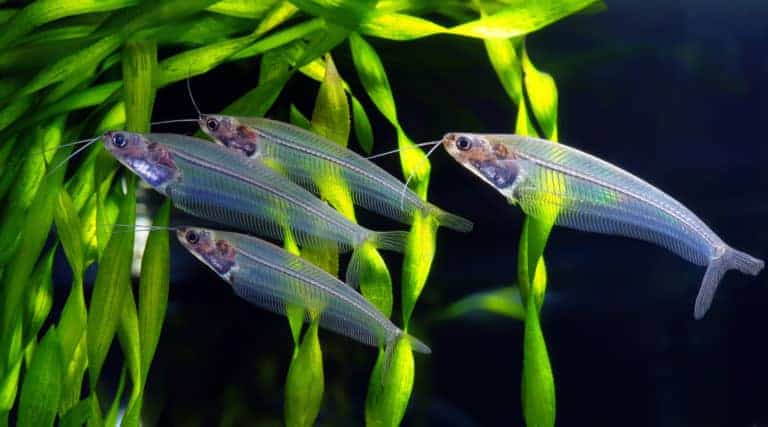
1. Java Fern
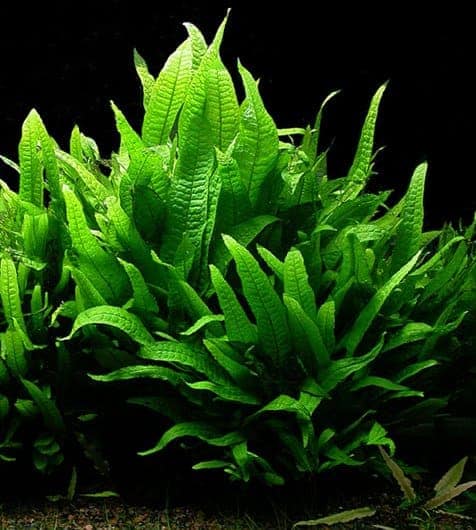
One of the most popular plants in the aquarium hobby is Java Fern (Microsorum pteropus). It is an easy plant to care for and can thrive in a wide range of conditions. Java Fern is a slow-growing plant, so it does not need frequent trimming. It can be attached to rocks or driftwood using fishing line or super glue.
Java Fern prefers low to moderate lighting and does not require CO2 injection. This plant is tolerant of a wide range of water parameters, making it an ideal choice for beginner aquarists.
2. Anubias
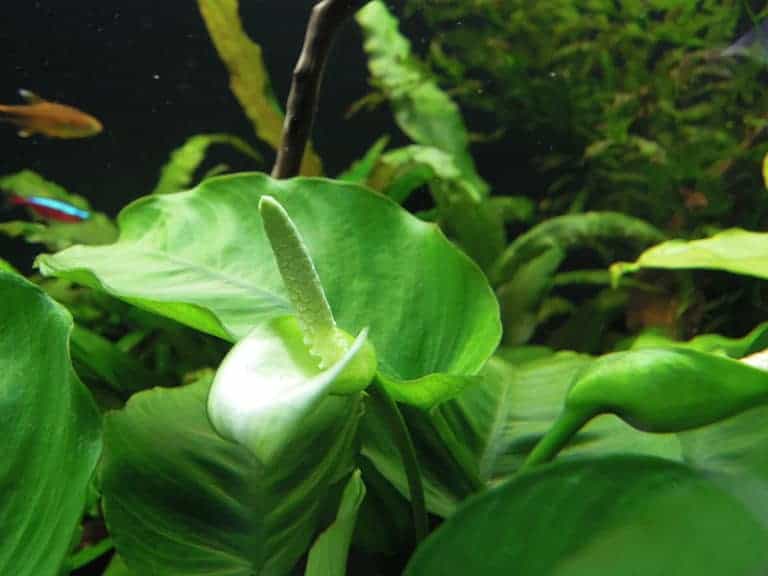
Anubias is a great plant for the foreground of your aquarium. It doesn’t need CO2, and it’s easy to care for. Anubias is a slow-growing plant, so it’s perfect for beginners. It’s also a great plant for fish tanks because it doesn’t need much light.
Different Types of Anubias
There are a variety of Anubias species that can do well in aquariums. Some are better suited for cooler water temperatures, while others prefer warmer waters.
Anubias barteri is a species that does well in cool water aquariums. It can tolerate a wide range of water temperatures, but prefers waters that are on the cooler side. This plant is native to Africa and can be found growing in both fast-flowing and slow-moving waters.
Anubias nana is another species that does well in cool water aquariums. It is native to Africa and prefers shaded areas with little direct sunlight. This plant can tolerate a wide range of water temperatures, but grows best in cooler waters.
Anubias Congensis is a species that does well in warm water aquariums.
3. Vallisneria
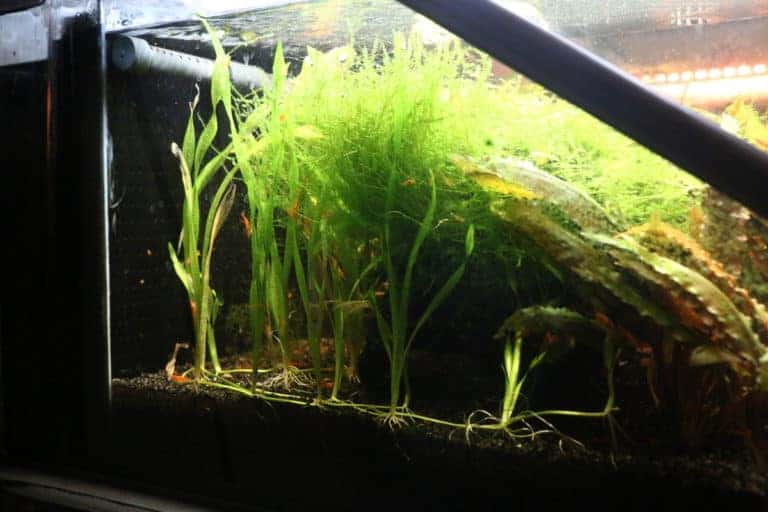
Vallisneria is a genus of aquatic plant that is native to many parts of the world. It is a popular plant for aquariums because it does not require CO2 and can tolerate a wide range of water conditions. Vallisneria can be found in many different colors, including green, red, and brown.
This plant is relatively easy to care for and can tolerate a wide range of light levels. Vallisneria will grow best in an aquarium with plenty of space for its roots to spread out. This plant can be propagated by dividing the root mass or by taking stem cuttings.
Propagating Vallisneria
Vallisneria, also called eelgrass or tape grass, is a popular plant in freshwater aquariums. Vallisneria can be propagated by dividing the rooted plants. To divide the plants, carefully dig up the roots and cut them into sections using a sharp knife. Plant the sections in individual pots filled with aquarium soil or gravel. Make sure to press the soil firmly around the roots.
After division, fertilize the plants with a balanced fertilizer formulated for aquatic plants. Apply the fertilizer according to the manufacturer’s instructions. Vallisneria are fast-growing plants and will benefit from regular fertilization.
Different types of Vallisneria
One of the most popular aquarium plants is Vallisneria, which come in a variety of colors and sizes. Some Vallisneria can grow to over two feet tall, while others stay shorter, making them ideal for both large and small tanks. One of the reasons Vallisneria is so popular is because it does not require carbon dioxide (CO2) to thrive. However, without CO2, Vallisneria will not grow as large or as quickly as it would with CO2 injection.
Vallisneria can be difficult to propagate from cuttings, but once you have a few plants, they will quickly fill in an empty tank. These plants are perfect for beginners because they are very low maintenance and can tolerate a wide range of water conditions.
4. Moss
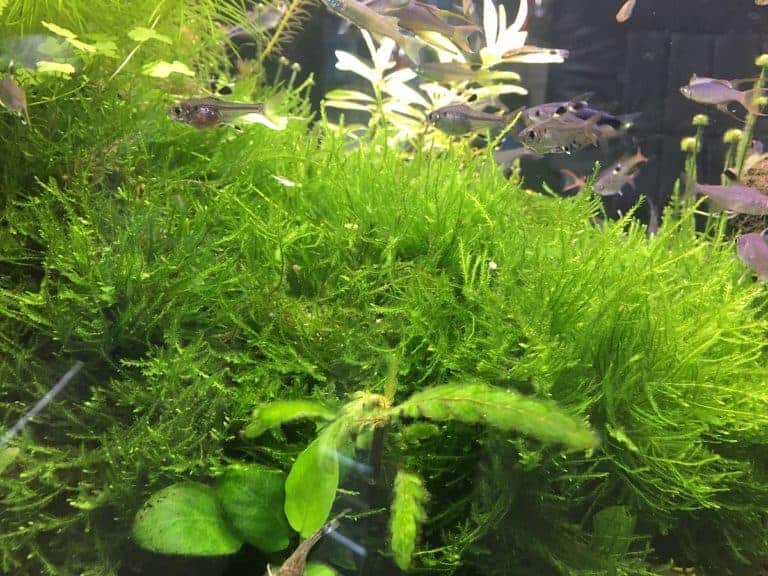
Moss is a common plant in aquariums and can be used in a variety of ways to add interest and texture to your planted tank. Moss can be attached to driftwood or rocks, left floating freely in the water column, or even used as a substrate for growing other plants.
Moss is relatively easy to care for and does not require CO2 injection or supplemental fertilizer. Just make sure to provide plenty of light and keep an eye on your moss for any algae growth.
Java Moss
Java moss is one of the most popular aquarium plants because it is so easy to grow. This plant does not need CO2 to thrive, making it a great choice for beginners. Java moss can be attached to rocks or driftwood and will eventually form a dense mat. This plant provides cover and hiding places for fish, and also helps to filter the water.
“Planting” Java Moss
Java moss is a popular plant for aquariums because it is very easy to grow and does not require CO2. Java moss can prosper in low light conditions which make it ideal for many aquariums. This plant can be attached to rocks or driftwood and will quickly spread and form a dense mat. Java moss is also a great place for fish to hide and spawning.
Care for Java Moss
Java moss is a great plant for aquariums because it doesn’t require CO2. It can grow in high light, but does best in low to moderate light. To care for java moss, simply attach it to a piece of driftwood or rocks using fishing line or aquarium safe glue. Be sure to rinse the java moss before putting it in your aquarium so you don’t introduce any unwanted pests.
5. Cryptocoryne
Cryptocoryne is a genus of freshwater aquatic plants from the family Araceae. The approximately 70 species are distributed throughout South and Southeast Asia. They are commonly called water solders, or more ambiguously water trumpets.
All Cryptocoryne species require nutrient-rich substrates and grow best when their roots are buried in soft, sandy bottomed tanks with plenty of room to spread out. Most species do not tolerate high levels of dissolved minerals and prefer slightly acidic to neutral pH conditions.
Cryptocorynes are generally slow-growing plants that can reach up to 20 inches (50 cm) in height, although most stay much smaller. They have long, slender leaves that vary widely in color and patterning depending on the species. Some have leaves that are green with red or brown stripes, while others are purple, red, or brown with contrasting veins.
Different kind of Cryptocoryne
Cryptocoryne is a large genus of aquatic plants that are popular in the aquarium trade. There are many different species of Cryptocoryne, and they come in a variety of colors and sizes. Some species are more difficult to grow than others, but all can be rewarding plants to add to your aquarium.
Cryptocoryne wendtii is one of the most popular species of Cryptocoryne. It is native to Sri Lanka and comes in a variety of colors, including green, brown, and red. Cryptocoryne wendtii is a relatively easy plant to grow and does not require CO2 injection or high light levels.
Cryptocoryne beckettii is another popular species of Cryptocoryne. It is native to India and Sri Lanka and comes in shades of green, brown, and red.
Planting Cryptocoryne
Adding live plants to your aquarium is a great way to spruce up the appearance and create a more natural environment for your fish. Cryptocoryne, also known as water trumpet, is a popular choice for many aquarists. Here are a few things to keep in mind when planting crypts:
Cryptocoryne prefer moderate lighting and do not need CO2 injection. They can be planted in the substrate or left free-floating. When planting in the substrate, make sure to bury the rhizome (the part of the plant where the leaves emerge) and firm the substrate around the plant.
Cryptocoryne are slow-growing plants, so be patient when waiting for them to fill in your tank. Regular trimming will help promote new growth.
6. Amazon Swords
Amazon Swords are a popular choice for aquariums because they are relatively easy to care for and don’t require CO2. These hardy plants can grow quite large, so it’s important to choose a size that will fit your aquarium. Amazon Swords prefer moderate to high lighting and do well in most types of substrate.
These plants can be propagated by dividing the root ball when they become overcrowded.
7. Water Weeds (Elodea)
Water weeds are a great choice for beginner aquariums because they don’t need CO2. They’re also easy to care for and can help keep your tank clean.
Water weeds are a type of aquatic plant that grows in water. They’re often used in aquariums and ponds because they help keep the water clean. Water weeds absorb nutrients from the water and help to prevent algae growth.
Water weeds are easy to care for and don’t require much maintenance. You can trim them back if they start to get too big, but other than that, they don’t need much attention. Water weeds are a great choice for beginner aquariums because they’re easy to care for and don’t need CO2.
8. Bucephalandra
Bucephalandra is a genus of ornamental aquarium plants. There are many species of Bucephalandra, and they are native to Southeast Asia. Bucephalandra can be found in various colors, including green, brown, and red.
Bucephalandra plants are easy to care for and do not require CO2. They can be propagated by dividing the rhizome. Bucephalandra plants prefer moderate to high lighting and should be fertilized with a liquid fertilizer once a week.
9. Dwarf Sagittaria
One of the most common aquatic plants, Dwarf Sagittaria is an easy-to-grow plant that can thrive in aquariums without CO2. It is a fast-growing plant that can reach up to 12 inches in height and produces small, white flowers. This plant is perfect for beginners because it is very tolerant of different water conditions and does not require special care.
10. Hornwort
Hornwort is a great low light plant for your aquarium. It doesn’t need CO2 and it’s easy to care for. Hornwort can grow up to 12 inches tall and has long, thin leaves. It’s a good idea to plant hornwort in groups of 3-5 plants. Hornwort is a fast-growing plant and will help to oxygenate your water.
11. Hygrophila Polysperma
Hygrophila polysperma is a common aquarium plant that is easy to care for. It does not require CO2 and can tolerate a wide range of water conditions. This plant is originally from India and Sri Lanka. It has long, narrow leaves that are green or reddish in color.
Hygrophila polysperma can grow to be quite large, so it is best suited for medium to large tanks. This plant is also known as Indian swampweed or dwarf hygro.
12. Water Wisteria
Water wisteria is a beautiful and easy-to-grow aquarium plant that makes a great addition to any freshwater tank. This plant is relatively undemanding and can grow in a wide range of water conditions, making it a good choice for beginner aquarists.
Water wisteria can be left unanchored to float freely in the aquarium or planted in the substrate. This plant typically grows to about 12 inches in height and produces long, delicate leaves that are pleasing to the eye.
13. Ludwigia Repens
Ludwigia Repens is an easy to care for plant that is perfect for beginners. This plant is native to North and South America and can be found in a variety of habitats. Ludwigia Repens is a fast-growing plant and can reach up to 30 cm in height.
This plant has bright green leaves and produces small yellow flowers. Ludwigia Repens is an excellent choice for aquascaping due to its ability to tolerate a wide range of conditions. This plant is relatively easy to care for and does not require CO2 supplementation.
14. Brazilian Pennywort
If you’re looking for an easy-to-grow plant that doesn’t require CO2, Brazilian pennywort is a good option. This plant grows quickly and can reach lengths of up to 2 feet. It’s a good choice for beginners because it’s relatively hardy and can tolerate a wide range of water conditions. Brazilian pennywort is also a good plant for filling in empty spaces in your aquarium.
15. Water Lettuce
For a beginner aquarium owner, water lettuce is a great plant to start with. This plant does not need CO2 and is easy to take care of. Water lettuce grows quickly and can help to keep your tank clean by absorbing nutrients from the water. This plant prefers warm temperatures and lots of light, so make sure to place it in a location where it will receive both.
16. Water Spangles
Water Spangles (Pistia stratiotes) is a floating plant that does not require CO2. It has dark green, oval-shaped leaves and can grow up to 12 inches in length. Water Spangles is a fast-growing plant and can quickly cover the surface of an aquarium. It is important to provide plenty of open space for this plant to grow.
Water Spangles is tolerant of a wide range of water conditions and is a good choice for beginners.
17. Marimo Moss Balls
Marimo moss balls are one of the easiest live plants to care for in an aquarium. They don’t need CO2 and can tolerate a wide range of water conditions. Marimo moss balls are also great at absorbing excess nutrients from the water, making them a perfect addition to any low-tech aquarium.
18. Red Tiger Lotus
Red Tiger Lotus (Nymphaea Lotus) is an easy-to-grow aquarium plant that can thrive without the addition of CO2. This beautiful plant has bright red leaves with black spots, and its flowers can range in color from white to pink. Red Tiger Lotus is a great addition to any aquarium, and it will help to keep your tank looking healthy and vibrant.
19. Moneywort
When it comes to low light aquariums, moneywort is a great option. This plant can tolerate a wide range of lighting conditions, making it ideal for those who are just getting started with live plants. Moneywort is also relatively easy to care for and can be propagated easily by cuttings.
20. Micro Swords
If you’re looking for some low-maintenance live plants for your aquarium, you can’t go wrong with micro swords. These little plants are perfect for beginners, as they’re very easy to care for and don’t require CO2.
Micro swords are very versatile, and can be used as either foreground or background plants. They’re also great for nano tanks. Because they’re so small, they don’t need a lot of space to grow and thrive.
If you’re looking for a plant that’s easy to care for and doesn’t need CO2, micro swords are a great option.
Frequently Asked Questions
1. What are live plants?
Aquarium plants are living organisms that play an important role in the aquatic ecosystem. They help to keep the water clean and provide shelter and food for fish and other aquatic creatures.
2. How do live plants benefit my aquarium?
Live plants help to keep your aquarium water clean and clear by absorbing nutrients and releasing oxygen into the water. They also provide a natural environment for your fish to swim and hide in, which can reduce stress levels.3. What are some easy live plants for my aquarium?
Some easy live plants for your aquarium include java ferns, hornwort, anubias, and swordplants. These plants are relatively hardy and do not require high levels of light or carbon dioxide (CO2).
4. How do I choose the right live plants for my aquarium?
When choosing live plants for your aquarium, it is important to consider the size of your tank, the type of fish you have, and the level of care you are willing to provide. Some plant species require more care than others, so be sure to do your research before making a purchase.
5. How do I plant live plants in my aquarium?
Before planting live plants in your aquarium, it is important to acclimate them to their new environment first. To do this, float the plant bags in your tank for 30 minutes before opening them up and planting the contents into your substrate (gravel or sand). This will help prevent shock and ensure a successful transition for your new plants.
6. What kind of substrate do I need for live plants?
Aquarium substrates vary depending on the type of plant you want to grow as well as personal preference; however, general rule is that a coarse substrate is better suited for root-feeding (eutrophic) plant species while a finer substrate is better suited for stem/leaf-feeding (oligotrophic) plant species.
Additionally , having some organic matter in the form of decaying leaves or wood can also benefit many types of rooted aquatic vegetation.
7. Do all live plants need CO2?
No, not all live plants need CO2in order to maintain healthy growth; however, most will benefit from having some for mof supplemental CO2in their environment whether it comes from a pressurized system or simply through the release of dissolved gases from fish respiration and decomposing organic matter.
8.How often should I fertilize my live plants?
Fertilizing schedules will vary depending on the nutrient needs of your specific plant species as well as the number of fish and amount of decaying organic matter present in your system; however, a diluted solution applied every 1- 2 weeks should be sufficient for most aquariums.
9. Are there any special care considerations I need to take with live plants?
In general, live plants are quite resilient and can tolerate a wide range of environmental conditions; however, it is important to research the specific needs of each species before adding them to your tank as some may require higher or lower light levels, pH etc.
10. Where can I find more information on keeping live plants in my aquarium?
If you are interested in learning more about keeping live plants in your aquarium, there are many excellent resources available online and in print
Final thoughts
If you are interested in learning more about keeping liveplants in your aquarium, there are many excellent resources available online and in print
If you’re new to the aquarium world, or just looking to add some greenery to your fish tank without too much hassle, these low-maintenance plants are a great place to start. From fast-growing options like hornwort andwatervine, to more delicate choices like laceleaf and dwarf hairgrass, there’s an easy plant for every beginner’s aquatic garden.
With a little bit of research and care, you can have a lush, green aquarium that’s the perfect home for your fishy friends. So dive in and get growing! If you still have more questions regarding live plants, don’t hesitate to contact me at the about page.
